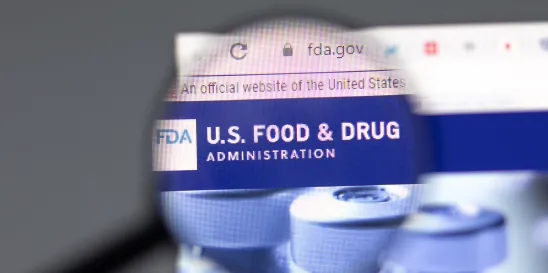| Go-To Guide: |
|
In a groundbreaking development, on Jan. 8, 2024, the U.S. Food and Drug Administration (FDA) announced a pilot program called Collaboration on Gene Therapies Global Pilot (CoGenT Global). Inspired by the Center for Oncology Excellence (OCE)’s Project Orbis, the initiative, conducted in collaboration with FDA’s global regulatory partners including the World Health Organization and members of the International Council for Harmonisation (ICH), which includes the European Union (EU), Japan, Canada, and Switzerland, is intended to explore the potential for concurrent, collaborative review of gene therapy applications.
Increasing Emphasis on Cell and Gene Therapy
Currently, there are more than 900 ongoing clinical trials in the cell and gene therapy sector in North America. By 2025, FDA predicts it will be approving 10 to 20 cell and gene therapy products a year. There are some 34 FDA-approved cell and gene therapies, primarily since 2017, including:
Stem Cell Therapies
- Zynteglo (2022)
- Skysona (2022)
- Casgevy (2023)
- Lyfgenia (2023)
T Cell Therapies
- Kymriah (2017)
- Yescarta (2017)
- Tecartus (2020)
- Breyanzi (2021)
- Abecma (2021)
- Carvykti (2022)
Directly Administered Gene Therapies
- Luxturna (2017)
- Zolgensma (2019)
- Hemgenix (2022)
- Adstiladrin (2022)
- Vyjuvek (2023)
- Elevidys (2023)
- Roctavian (2023)
The growth of cell and gene therapies has raised several policy questions that FDA is expected to answer. Notably, the Center for Biologics Evaluation and Research (CBER) is coping with this new challenge through investment in its program’s infrastructure. Last March, CBER reorganized the Office of Tissues and Advanced Therapies (OTAT) to become the Office of Therapeutic Products (OTP) and transitioned into a super office structure to address the substantial growth in the development of innovative, novel cell and gene therapeutic products. Furthermore, CBER is adding many new employees, funded in large part by the 2022 prescription drug user fee reauthorization’s additional fee revenues.
CBER also may be ready to adjust its regulatory policies for gene editing products, in part to encourage sponsors to take advantage of FDA’s expertise and conduct more clinical trials in the United States. CBER’s regulatory approach to gene therapy and similar products is evolving as reviewers gain confidence in product safety.
Obstacles to Commercial Success and FDA’s Ongoing Efforts
While, according to CBER Director Peter Marks, there are numerous advantages to gene therapy, including single-dose administration, the high possibility of success, multi-disease uses, and long-term disease benefits or even cure, there are considerable challenges to the commercialization of such therapies, including the complexity and cost of manufacture and business and economic challenges, such as high interest rates, macro-economic conditions, clinical development timelines, and scale issues.
To address those obstacles, FDA is undertaking numerous regulatory approaches and new practices to encourage development and commercialization of promising gene therapies.
- CBER desires to advance manufacturing technologies for cell and gene therapies by sponsoring research and encouraging collaboration with the National Institutes of Health’s Bespoke Gene Therapy Consortium. CBER highlights several examples such as (1) harmonizing manufacturing protocols used by academics and small companies that often conduct the initial research with those of larger contract manufacturing organizations that often assist in manufacturing of such products at scale in an effort to cost-effectively facilitate transfer of the therapies and (2) automating, in whole or in part, manufacturing processes through the development of gene therapy fabrication devices.
- CBER would like to leverage the platform technology provision in the Food and Drug Omnibus Reform Act Section 2503 allowing sponsors to “reference or rely upon data and information” from a previous application for a drug or biological product that incorporates or uses the same platform technology submitted by the same sponsor or with permission from the original sponsor. FDA says it plans to issue guidance related to this effort but provided no insight into a publication timeline.
- CBER endeavors to define and leverage the use of accelerated approval for gene therapy more clearly. Accelerated approval is typically available for drugs and therapies targeting rare diseases with small patient populations and that lack effective treatments. Nonetheless, manufacturers still must demonstrate an anticipated clinical benefit, though FDA is willing to accept “some level of uncertainty” as to certain side effects. To expedite this clinical benefit evidentiary process, in March 2023, FDA said it was moving toward the use of biomarkers like pulse and blood pressure as substitutes for other biological indicators in gene therapy clinical trials to accelerate approval of therapies for serious conditions.
- CBER launches the Support for Clinical Trials Advancing Rate Disease Therapeutics (START) Pilot, which intends to accelerate the pace of development for products intended to address unmet medical needs in rare diseases or conditions likely to lead to significant disability or death through communication with companies—a “concierge service”—by addressing clinical development issues that would otherwise delay or prevent a promising novel drug or biological product from progressing to the pivotal clinical trial stage or pre-BLA/pre-NDA meeting stage. The Pilot is accepting applications (via amendments to Investigational New Drug applications) to participate through March 1, 2024.
- FDA’s active CMC Development and Readiness Pilot Program, which accepts nine requests per year, continues to facilitate development of a more standard development process between academics, who do much of the innovation and often use a unique manufacturing platform, and those who ultimately engineer and commercialize the cell and gene therapy, who often use a different manufacturing platform.
- FDA contemplates following gene therapy patients for up to 15 years after treatment to evaluate the actual impact on safety or efficacy. FDA plans to ensure the data will be gathered irrespective of changes in product ownership and patient movement.
-
Director Marks has expressed concern about a potentially too-high regulatory bar for cell and gene therapies and has pushed some clinical trials to other countries. He elaborated the bar may be lowered going forward as the agency continues to gain confidence in product safety.
Potential Solution Through International Collaboration
There are hundreds of ultra-rare diseases afflicting one to thousands of patients per year that, due to their small patient populations and high startup costs, lack commercial viability and, hence, do not attract investment. These scale issues are exacerbated by disjointed global regulatory schemes that lack uniformity or harmonization. This regulatory misalignment, in turn, increases review timetables and costs, which further deters investment in and development of gene therapies for rare diseases.
In response to this business and regulatory climate, the CoGenT Global initiative aims to increase investment in and development of such therapies and promote the development and accessibility of gene therapies globally by both (1) leveraging the aggregate global patient population to reach an investment-worthy scale and (2) streamlining the review process by coordinating review efforts and consolidating resources and expertise to reduce costly, time-consuming, and redundant submissions and regulatory reviews.
The initiative is still in its infancy, but it already has a basic framework. In Director Marks’ Jan. 8 presentation to the Alliance for Regenerative Medicine (ARM)’s Cell & Gene Therapy State of the Industry Briefing in San Francisco, he said the Pilot will not only allow partners to participate in internal regulatory meetings with sponsors of new gene therapy applications but also allow applications, supporting information, and regulatory reviews to be shared with regulatory partners, subject to strict confidentiality agreements.
The CoGenT Global initiative supplements the Oncology Center for Excellence’s well-established Project Orbis, established in 2019, which provides for the concurrent submission and review of oncology products among international partners, including Australia, Brazil, Canada, Israel, Singapore, Switzerland, and the United Kingdom.
Project Orbis may also provide insight into what stakeholders can expect from the program. If Project Orbis’s results are any indication of the Pilot’s potential, there is much promise in the program. Indeed, as of December 2022, Project Orbis has received 369 applications, up from 27 in January 2020, and has taken 291 regulatory actions, up from 10 in January 2020.
Conclusion
While FDA has not announced any specific information about how to participate in the Pilot, it likely will elaborate on the initiative in the coming months. FDA aims to ensure its leadership in the regulation of cell and gene therapy, and to secure the U.S. market as the most prominent place for development of novel therapies. Firms should also monitor and analyze FDA activity in the acceleration, platform technology, and manufacturing spaces, which could be additional avenues for expediting or reducing the costs associated with commercialization of gene therapies. Firms may also wish to take advantage of this momentum to develop a global approach as opposed to focusing on any single market.



 />i
/>i
